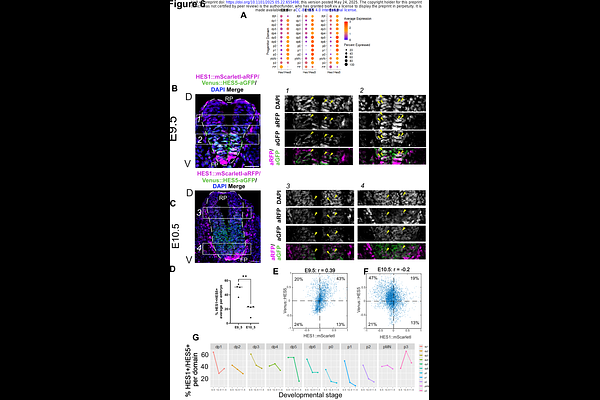Oscillatory Co-expression of HES1 and HES5 Enables a Hybrid State in a Bistable Transcription Factor Regulatory Motif

Oscillatory Co-expression of HES1 and HES5 Enables a Hybrid State in a Bistable Transcription Factor Regulatory Motif
Biga, V.; Miller, A.; Kamath, A.; Mak, Y. Q. P.; Adamson, A. D.; Marinopoulou, E.; Francois, P.; Papalopulu, N.; Manning, C. S.
AbstractMany cell fate decisions in the developing neural tube are directed by cross-repressive transcription factor (TF) motifs that generate bistability, enforcing expression of one dominant TF. However, evidence of hybrid states, where cells co-express opposing fate determinants, challenges this model. We hypothesised that oscillatory expression enables co-existence of cross-repressive TFs within single cells, allowing hybrid states in bistable motifs. To test this, we focused on HES1 and HES5, oscillatory, cross-repressive TFs that regulate neural progenitor maintenance and are expressed in adjacent dorsoventral domains in the developing spinal cord. Using live-cell imaging of fluorescent reporters and computational modelling, we show that HES1 and HES5 co-express and oscillate in-phase within single cells. Differences in protein stability result in distinct free-running periodicity, but co-expression results in entrainment and phase-locking. Modulating cross-repression strength and/or abundance shifts the system towards bistability and dominance of a single TF oscillator. Consistent with this, we observe progressive separation of the HES expression domains in vivo, through a decrease in oscillatory co-expression. Our findings provide a mechanism for hybrid states to emerge in a developmental bistable motif.